The question of how best to photograph on a camping trip relates to general questions - how to photograph in general. But on a hike for the photographer, and just for the person with the camera, there are nuances and additional features that can and should be taken into account.
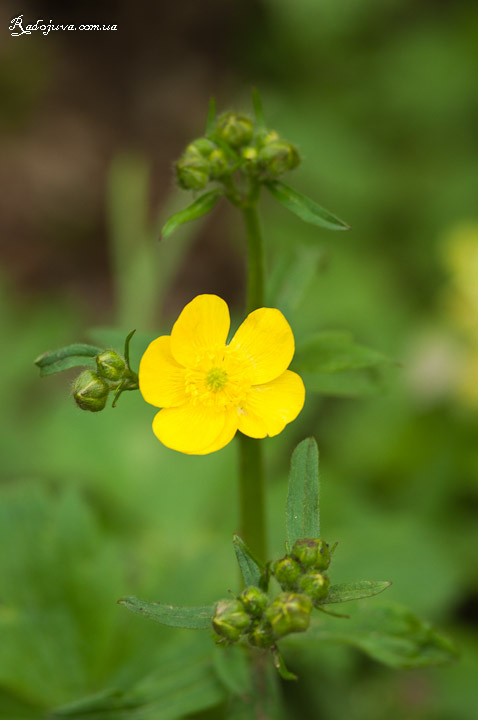
Flower and other vegetation in the campaign
And so, first you need to decide what you are going on a hike - very often it is a large, huge backpack full of provisions, clothes, a tent and a sleeping bag, and also a guitar to boot. Every extra kilogram that a person carries is important during a hike. Therefore, if you plan to constantly photograph, then it is better to take a light camera with a light lens. All digital cameras are ideal for a hike, DSLRs are already really adding extra pounds.
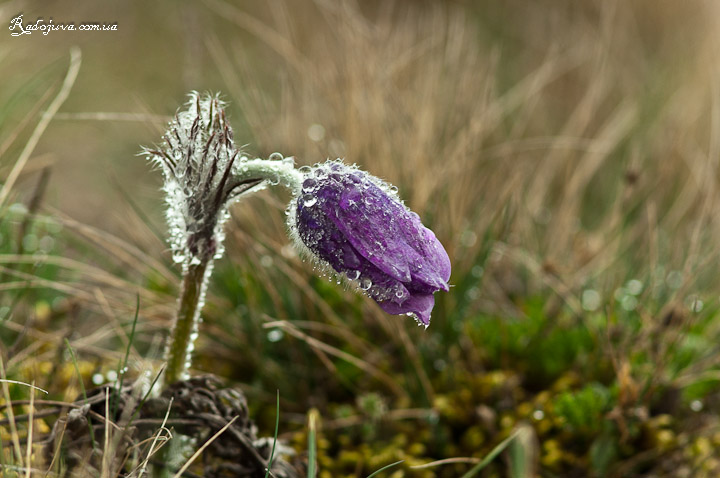
Flower at 6 in the morning.
So what should you take? I advise you to get by with the standard kit lens 18-55, which will give you the ability to zoom, wide angle of view, and it is also lightweight. You can also grab an additional lightweight lens. From experience I will say that heavy telephoto cameras are not very effective on a hike, since it is not convenient to walk with them all the time, and it takes a long time to stop and change them, especially if this is a real hike to the most ordinary mountains for a couple of days. Also, you need to remember about the battery charge and, if possible, turn off the image stabilization function on the lens, make the delay in displaying the captured photo to a minimum, or better - just take a spare battery.
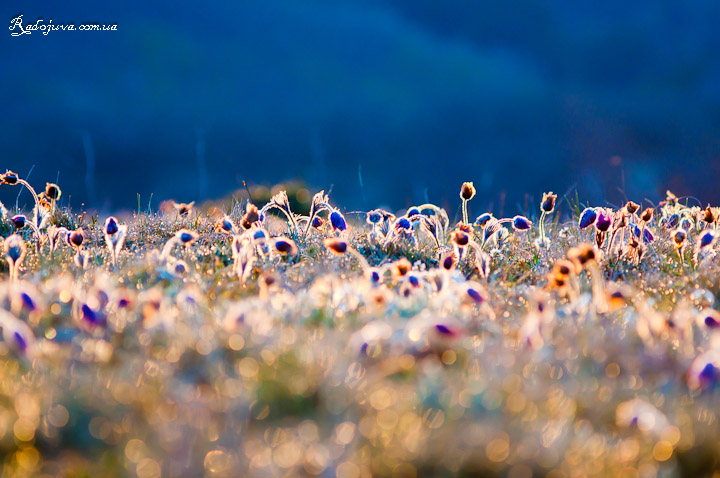
During sunset
For example, the photos in this article are taken on 3 lenses - this Jupiter-21AI took to write a good review about him. The whale lens 18-55, which is very sharp and made it easy to shoot landscapes, and Jupiter-37A, which my colleague shared. I will say that with the heavy and long Jupiter-21A it is very difficult to control in the mountains and it’s almost impossible to quickly put together the right frame with people.
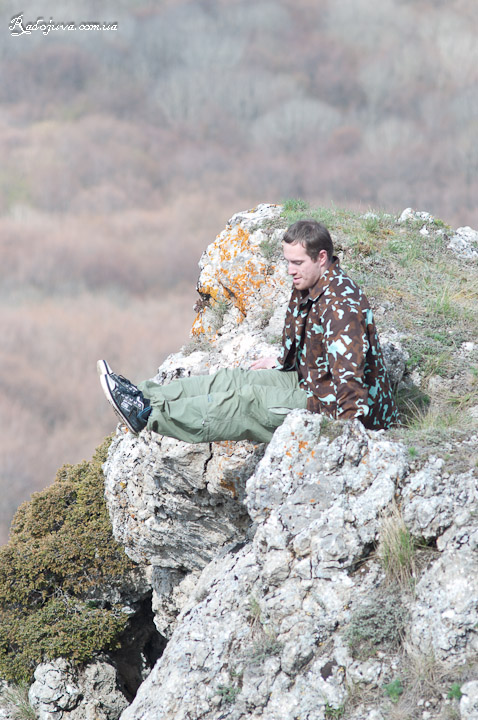
Interesting moments in the campaign
I advise you to always wear a camera around your neck so as not to miss interesting landscapes, animals, people. The camera strap can pretty much rub the photographer’s neck if he hasn’t worn the camera on his neck all day. The heavy bundle of the camera and lens rubs especially. In my first trip with a DSLR, my D90 and whale 18-105 made it quite difficult to move on the trip, rubbed my neck, and added extra effort. Of course, while parking, using the bundle was quite convenient.
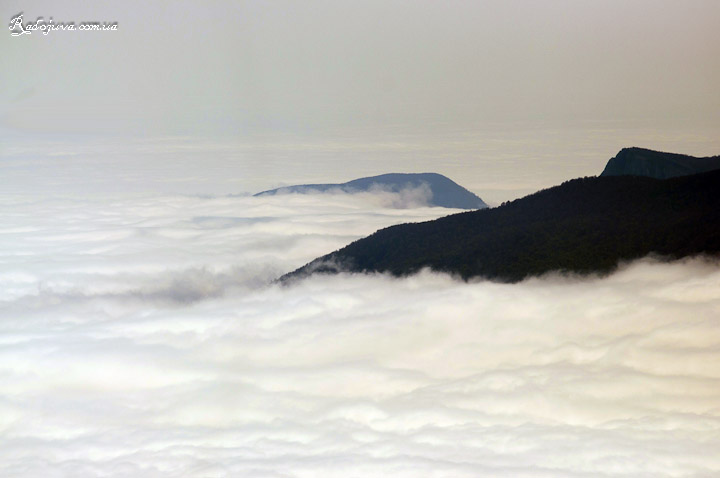
Above the clouds - a photo from a hike in the mountains
It is necessary to take a moisture-proof bag, since you can get it in the rain, and even at night the camera can damage the condensate formed from temperature extremes. Additional photo equipment should be taken according to the level of needs for photo research.
Then the most interesting part is how to take pictures: due to the hiking mood, the landscape will constantly change and landscape photographs can make a whole lot. Also, in nature, a wide variety of different plants that will attract your attention.
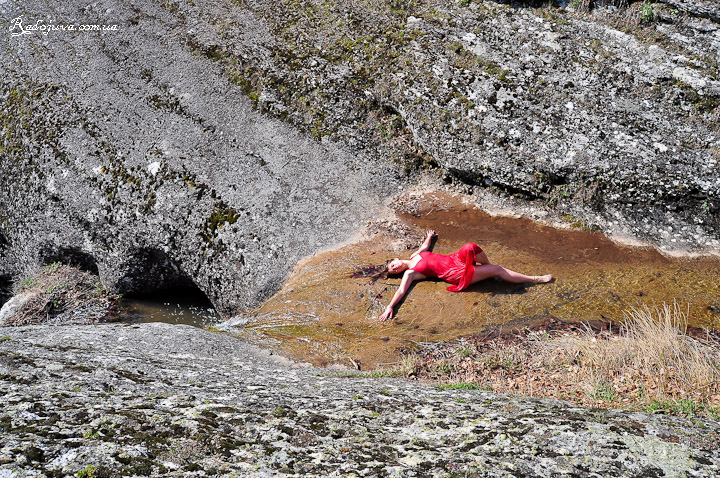
Near the waterfall
Especially interesting photos can be taken during sunset or sunrise. True, in the summer sunrise is quite early. All terrain and all objects during sunset and sunrise have a nice color.
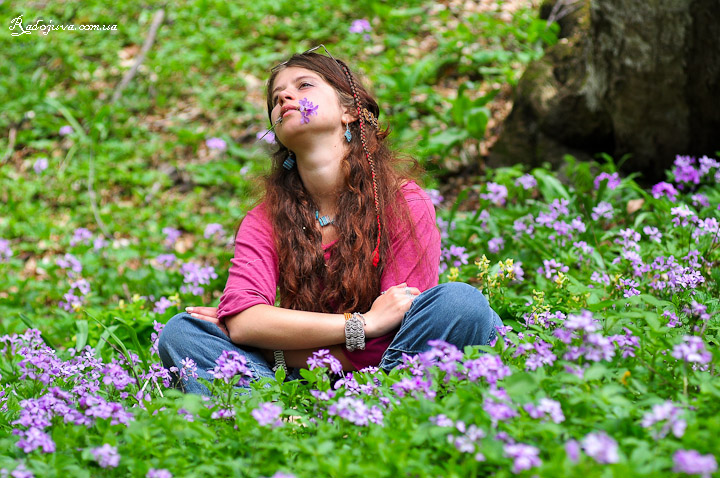
In nature, you can find many colors
Also, you can take pictures against the background of the nature of your friends or just people, here the field for creativity is huge and you need to look at each situation separately. Most likely your friends themselves will ask you to photograph them against the background of something interesting.
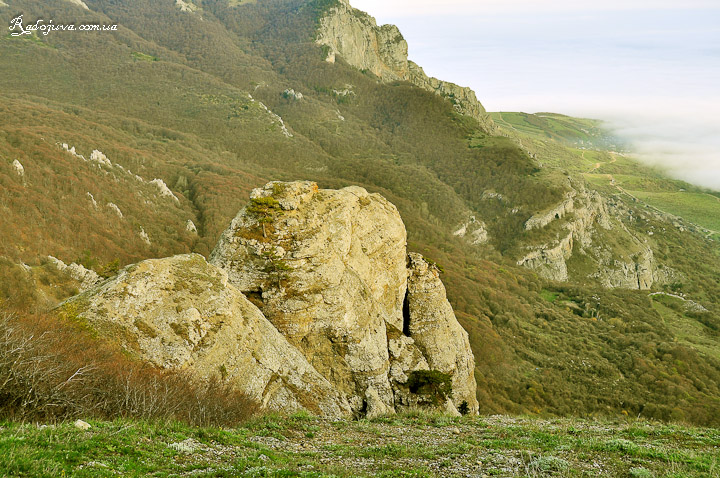
Only mountains can be better than mountains
And, probably, the best recommendation on a trip is to always look at your feet when you need to move around during photography.
Help to the project. Thanks for attention. Arkady Shapoval.






















Very interesting, now I am studying the art of photography, I will consider your recommendations
I would like to ask for advice .. Soon we are planning a bike fest. Crazy desire to take a SLR, because interesting event, lively, funny people, etc. Great practice .. But still I’m going on vacation and there’s no desire to shake the apparatus all the time ((Dilema ((
PS: Nikon 3100 camera.
why shake for him? They need to take pictures. I’m stupid to buy a camera and not use it when there is a suitable moment.
As for me, the Nikon D3100 is not very large and you need to shake a good camera, but it costs not so much.
I can also add from my hiking experience that sunrise and early morning are also separate times for interesting photos, because there may be dew (as in the photo in your article). You can very beautifully photograph plants, cobwebs, in general, macro. If you have a remote control, you can shoot a beautiful night sky, which, if without clouds, is full of stars. The Milky Way may be visible. The fact is that in nature there are no light sources from the ground around, and therefore the atmosphere is especially transparent. Also, a night photo of a landscape against the background of such a sky will be charming.
Reasonable and concise. I want to share my little experience. I carry the Sony Nex5n with me when I hike. Lenses 18-55 kit, 50mm f / 1.4 manual SMC pentax. Telephoto lenses - totally agree, useless and unwieldy.
I don't wear a camera on my neck - there is a large range of motion, I have to hold the camera with my hand all the time, make sure that it does not hit when you bend over. I wear it like this: a soft photo-bag the size of a camera in a hermetic box is attached to the belly. At the same time, the “ears” of the photo-bag are attached with small carabiners to the straps of a worn backpack (in this place a strap is usually attached to the backpack that tightens the straps on the chest). If constructively no fasteners are provided on the straps of the backpack, you just need to attach either rings for carabiners or a strap with plastic latches.
In addition, as it was said in the article: buy a special package, or better a hermetic box for the camera. And put 1-2 bags of silikogel there. Otherwise, if you open the bag during the day, dew will fall out at night. If you are taking additional lenses with you, be sure to buy soft cases for them. I carry the second lens in the side pocket of my main backpack. In this case, the lens is placed in a soft case, and that, in turn, in a piece of plastic sewer pipe Du80 :)
... and two more things:
1) It's hard for me to carry a full-fledged tripod on a serious trip, the best solution for me was a small tripod-stand. Many of these have seen: a turntable with a screw and three legs of 15 centimeters (attention: there are Chinese multi-section mini-tripods. They are three legs made of plastic hinges - they are unreliable and can only be used with a small soap dish)
2) buy an IR remote control. China makes remotes for all camera manufacturers. They cost 100 rubles on EBAY and are no different from the original. Thanks to the remote control, you will reduce vibration when shooting with a tripod + you can take a group photo (more convenient than setting the delay on the camera)
.. ah, forgot one more thing:
1) if your main lens does not provide macro, take the spacer rings. They won’t take up much space, it’s not a pity to break them (https://radojuva.com.ua/2011/08/makro-extension-tubes/), and macro flora and fauna are always very interesting. Even when you go to the fields (landscapes of the same type), you bring with you a bunch of photos of insects, stamens, pistils :) I keep the rings in the side pocket of my backpack in a regular bag so that they don't get wet.
Another thought: do not use “flip-flops” from good lenses on the hike! (two lenses connected to each other by front lenses) (https://radojuva.com.ua/2011/09/revers-macro-ring-for-nikon/) The fact is that the rear lens of the second lens gets clogged very quickly and is very poorly cleaned, so it will be impossible to use this lens later in the “normal” connection. It is better to find a cheap Soviet fifty rubles for 800 for the changeling.
2) Let me remind beginners that you need to shoot macro with spacers on a trip in the daytime with good sun, since spacers very much reduce the equivalent aperture.
Hello Arkady! In the recent past (a month ago), became the owner of a Nikon D50 SLR camera. Old, but in good condition. So far, very happy. In general, I go in for sports tourism, and for a long time I wanted to buy something mirrored and start to take beautiful pictures myself. Thank you so much, by the way, to your site, which I read, and draw valuable information, because a novice lover :))), I hope so far. So !!!! The question is this !!! Arkady, tell me which lens is better to take on a hike ??? For some reason, while reading your article, I realized that 18-200 is better! And then I read, you write that the whale 18-55 is the best option. Or can there still be thoughts ??? Maybe two small ones, so that you could shoot Macro ??? In general, I would like to hear the opinion of the pros! Thank you in advance!!!
On a hike, I would take something easy, if it is a really long hike, because the preference is 18-55, and if you can take as many equipment as you like, then 18-200 will be just right.
Maybe this is an option ??? Maybe something else ... TAMRON AF 28-300 mm Ultra Zoom XR F / 3.5-6.3 LD ASPHERICAL (IF) MACRO for Nikon AF-D
Arkady, please plant from which manufacturer to choose Sigma or TAMRON ???
I recommend not choosing Sigma \ TAMRON, but choosing a lens directly from Sigma \ TAMRON, since each company has bad and good lenses, it’s very difficult to judge in general.
Thank you, I will choose!
Significantly, dyakoy.
How can I supply power with an additional charge for a camera?
Shukav fighters on AA, do not know. : /
And go treba bude dovgo .. pohid mіsyats trivatime. By the way, you’ll be seated, you can be recharged if you need it, but you don’t need to be charged.
Would you please me? :)
I take a few acks on a hike.
I ask, having screwed up the canes. Nikon d3100 .. Pratsyuvav in the right direction of another Akum - ale all the demand will be charged from people. Niochin. : /
The sound of sleepy batteries is 9 volts and it's dumb.
After reading the radioelectronics - it can’t go out, it’s not like a human being in a photo, but it’s not like a battery.
Use baht. a pen, 2 batteries are inserted there, one original - for checking with the camera, the second regular - not original, everything works fine, you can also AAA batteries in baht. insert the handle, and IR remote controls for some handles are available, so it's a useful device on a hike, success.
Arkady, tell me the ISO you had on the machine or set it manually? It seems the weather was sunny, but ISO, then 200, then 400, and even Lo 1? Explain to the dark man!
Good afternoon.
Please tell me, what is the best way to set up the camera on a camping trip, so that the battery lasts as long as possible? What features can be turned off?
1) display backlight!
2) do not view photos in memory
3) use the flash less often.
But from experience, the charge is enough for a very, very many frames.
Thanks! Does autofocus backlight, auto focus, and the VR vibration reduction system on the lens have no significant effect on the duration of the work?
Somewhere it happened that VR affects the duration of charging.
Found here in the article “Review Nikon 18-105mm f / 3.5-5.6G ED VR AF-S DX Nikkor”
”Always remember that when you are in continuous focus mode (or just hold the shutter button halfway down), the image stabilizer works (unless you disable it on the lens itself), which in turn reduces your battery power. Therefore, if you need a lot of tracking focusing, then it is advisable to turn off the stabilizer. This method helped me save the camera battery on the hike. ”
I wonder how much this trick saves the battery.
On more advanced Nikon cameras, it is not necessary to disable the stabilizer in the lens to conserve battery power. It is enough and necessary, as I see it, to put autofocus on a separate “AF On” button and set the continuous focusing mode in the camera. This ensures parallelization of continuous focusing and exposure locking. Moreover, continuous focusing will be exactly as long as the “AF On” button is clamped by the photographer's finger. In this case, the lens stabilizer (VR) is only activated after half-pressing the shutter button. Tested on Nikon D200 and Nikkor 70-300 VR AF-S. The stabilizer starts to “rustle” and the picture becomes “smooth” only after pressing the half-shutter. My Nikkor 18-105 VR DX AF-S set behaves the same way, only in it the stabilizer is not heard or visible, like in the 70-300 VR. Use :)
Good day! Tell me how to photograph very bright objects, such as flowers? For example, if a rose is very saturated with bright red, then the photo turns out to be blurry, like a single red lump. Thanks!
For a trip you need a comfortable backpack! I have this http://foto-olimp.ucoz.ru/publ/fototekhnika_i_oborudovanie/udobnye_prinadlezhnosti/sumka_s_quot_kryljami_quot_obzor_rjukzaka_tenba_shootout_sling_bag_medium/8-1-0-8
When in a long time you have a mountain backpack under 15 kg behind you, this backpack is out of place.
oh, I would have such a backpack of 15 kg, usually girls under 25 kg have no more than 18 ...
Thanks. Very informative site.
Tell me how to avoid fogging the lens glass in the early morning on a trip? Camera at night in a tent where it’s warm. And in the morning it’s cold outside and when you take it out of the bag, it fogs up the glass.
Since we often go camping (mainly cycling), we have the following set:
- Nikon D3200 is small but gives a good picture.
- whale 18-55 - for wide angle landscape photography.
- 70-300 G VR - for birds and shy animals, as well as for distant beautiful species.
- tripod - for evening / night photos, well, or for a general group photo, when it is impossible to properly set the camera down on the bike bag.
- a set of filters - neutral gray, polar.
good evening) someone in the comments wrote that the camera was spending the night with him in a tent. tell me, is it necessary? if he remains in a backpack in the dressing room (naturally in his own closed bag), can this negatively affect him? and will a possible low temperature affect the battery charge? we are not talking about winter trips, although the information would not be superfluous) thanks;)
Nothing will happen to him in the vestibule. In the case of a winter hike, it will even be better if you do not store it in a tent. it often forms wet spots at the bottom and in the corners. Any temperature drop from cold to warm is fraught with condensation on the chamber itself, so it must be warmed up gradually, in a bag.
You can’t escape from the loss of capacity in the cold. The only option is to store the acc on the body under the clothes, and from it, hold the extension cord into the body of the old empty battery, which is inserted into the camera. In any frosts, 3-4 batteries were enough for a 2-week hike, I never bothered.
I don’t go camping for a long time, usually a day or two, three at most. And the camera, of course, is always with you. But what exactly do I decide based on plans for the campaign:
1) If it’s a half day-day trip, lightly and through the fields, without taking a purpose to take something specific, then the simplest carcass with the simplest lens 18-55 is ideal. I had it d5100 with a whale that year.
2) If the sortie is again for a day, but with the goal of not just sticking around, but, for example, picking mushrooms, then in addition to weight, size is also important. I took 400d with me with 40 2.8. Due to the relative brightness of the lens, they can be shot in the forest in cloudy weather. 400d and all canon crop last 10 years normally hold ISO 800, ISO 1600 is already weakening. So it’s enough for the forest during the day, and in the evening it will be hard.
3) If for several days and this is a serious hike with a large mileage, then it is better to take a protected carcass with a butblock or spare batteries. From my park it is either 50d or d7000. On a long hike, I still prefer to take not only a standard lens, but also a telephoto lens. Canon 55-250is is ideal in this sense - and sharp and weighs little.
4) If you need to be light for several days, without extreme sports, if you have to take a picture, but without quality requirements, then super zoom with a camera that has good working ISOs and at the same time weighs a minimum will be ideal. Type d5200 and tamron 18-270vs.
5) Well, if for a long time, leisurely, with small movements, if you will most of the time stand in one place in the tents, then you can already have a good time, fill up a half-backpack with photographic equipment. Here, the puff will not hurt, a pair of carcasses, shirikov, telephoto, fix, standard :) In general, it all depends on the goals.
Picture for your 5th option :)
is that the Schreibikus reporter from the German textbook? I didn’t think that I would see “real photos”
joke, thanks for this maniac. I’ll probably never see this live
When hiking, remember the kind word film cameras, in which one battery lasts for years
I brave in the mountains 5Dіі + 16-35 / 2.8L II + 70-200 / 2.8l, in the quality of a standard zoom 16-35 - a wonderful option, 70-200 / 2.8 oversized, you need brothers 70-200 / 4 more 2.8 just not required ale / 4 in me not bu. For a height of 200mm on the main frame, it is short, you need a teleconverter 1.4. Tripod - maє buti obov'yazkovo with a ball head of 10 kg. I use giottos ytl 9313, everything is smaller / lighter - rubbish, carbonic tripodi - screaming rubbish. Accum and memory: in the middle one add-one Akum, one add = 8 GB of memory. One original lp-e6 charging at 100% = starttrail for 437 exposures for 30 seconds at іСО 640 and 16С. Yusb charging seiwei for 2 lp-e6 + poverbank for 6250mAh at 5V = 4 additional charges. P.S. Spikes on the tripod brothers are not required, remin 'cameri maє buti
textile, replace the intervalometer better set the magic lantern, brav sleeps 220ex - not regretted, microfibra is needed, lightfilters may be good, the blendy is definitely needed, but a spare for a little more, maybe for a crack
P.S. For nikonovodіv, fans of astrophotography and start-ups, like Volodiyut D300 + Varto add a batlock with a pair of batteries in one sign.
It's nice to see native Crimean landscapes in your article))) Thank you for your work - the work on the site has been colossal!
Where are these mountains that clouds can be taken from above?
sometimes in Crimea such shots can be made, but better in the mountains it’s better in the Caucasus